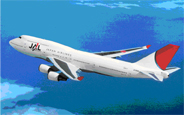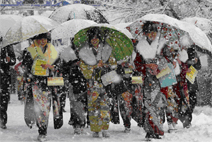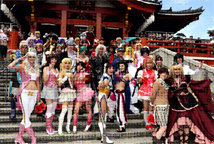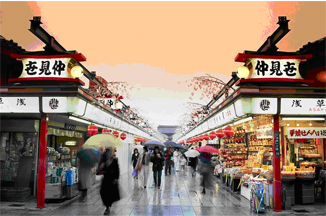- News Front Page
- Uncategorized
- Headline News
- Filipino Calgarian
- Business
- Pinoy Stories
- Community News
- Publisher's Note
- The Main Ingredient
- Views and Opinions
- Maikling Kwento
- Alberta News
- OFW – Month
- Travel News
- Health and Lifestyle
- Pinoy Toons
- Pinoy Spirit
- Entertainment
- The Philippine Lawyer
- Horoscope
- Greetings
- About Us
- Greetings From the Prime Minister
- Greetings from the President of the Philippines
- Greetings from the Premier of Alberta
- Greetings from the Mayor of Calgary
- Advertise With Us
- Disclaimer
- Subscription
Publisher's Note
- Publisher’s Note
 It was 22 years ago when I arrived in Canada and chose Calgary, Alberta to be my home. Leaving my family and friends behind, it was a new adventure for me to be in a new country without knowing anyone. That was the time I looked for a Filipino community paper and never found any, [...]
It was 22 years ago when I arrived in Canada and chose Calgary, Alberta to be my home. Leaving my family and friends behind, it was a new adventure for me to be in a new country without knowing anyone. That was the time I looked for a Filipino community paper and never found any, [...]
Visitors to Pinoytimes
Page added on September 29, 2013
JAPAN TRAVEL PLANNER
[if gte mso 9]>
[if gte mso 9]>
[endif] [if gte mso 10]>
[endif]
Things to Know if you’re planning a trip to Japan
LOCATION. Japan is an island nation in East Asia. Located in the Pacific Ocean, it lies to the east of the Sea of Japan, China, North Korea, South Korea and Russia, stretching from the Sea of Okhotsk in the north to the East China Sea and Taiwan in the south.
Most intercontinental flights arrive at either Narita Airport (NRT) near Tokyo or Kansai Airport near Osaka; a smaller number use Chubu International Airport (NGO) near Nagoya. All three are significant distances from their respective city centers, but are linked to regional rail networks and also have numerous bus services to nearby destinations. Tokyo’s other airport, Haneda Airport (HND), is still primarily for domestic flights but has begun drawing an increasing number of international flights away from Narita.
Just about every sizable city has an airport, though most only offer domestic flights and a few services to China and Korea. A popular alternative for travellers to these cities is to fly via Seoul on Korean Air or Asiana Airlines: this can even be cheaper than connecting in Japan.
 Both Narita and Kansai airports are generally easy to get through and not particularly crowded assuming you avoid the main holiday periods – namely New Year’s (end of December – beginning of January), Golden Week (end of April – beginning of May), and Obon (Mid-August), when things are more hectic and expensive.
Both Narita and Kansai airports are generally easy to get through and not particularly crowded assuming you avoid the main holiday periods – namely New Year’s (end of December – beginning of January), Golden Week (end of April – beginning of May), and Obon (Mid-August), when things are more hectic and expensive.
 Japan’s two major airlines are Japan Airlines (JAL) and All Nippon Airways (ANA). Delta Air Lines, United Airlines, and American Airlines also operate sizable hubs at Narita, with flights to many destinations in the US and Asia.
Japan’s two major airlines are Japan Airlines (JAL) and All Nippon Airways (ANA). Delta Air Lines, United Airlines, and American Airlines also operate sizable hubs at Narita, with flights to many destinations in the US and Asia.
 CLIMATE. Japanese are proud of their four seasons (and an astonishing number of them are firmly convinced that the phenomenon is unique to Japan), but the tourist with a flexible travel schedule should aim for spring or autumn.
CLIMATE. Japanese are proud of their four seasons (and an astonishing number of them are firmly convinced that the phenomenon is unique to Japan), but the tourist with a flexible travel schedule should aim for spring or autumn.
Spring is one of the best times of year to be in Japan. The temperatures are warm but not hot, there’s not too much rain, and March-April brings the justly famous cherry blossoms (sakura) and is a time of revelry and festivals.
Summer starts with a dreary rainy season (known as tsuyu or baiu) in June and turns into a steambath in July-August, with extreme humidity and the temperature heading as high as 35°C. Avoid, or head to northern Hokkaido or the mountains of Chubu and Tohoku to escape. The upside, though, is a slew of fireworks shows and festivals big and small.
Autumn, starting in September, is also an excellent time to be in Japan. Temperatures and humidity become more tolerable, fair days are common and fall colors can be just as impressive as cherry blossoms. However, in early autumn typhoons often hit the southern parts of Japan and bring everything to a standstill.
 Winter is a good time to go skiing or hot-spring hopping, but as some buildings lack central heating, it’s often miserably cold indoors. Heading south to Okinawa provides some relief. There is usually heavy snow in Hokkaido and northeast Japan due to the cold wind blasts from Siberia. Note that the Pacific coast of Honshu (where most major cities are located) has milder winters than the Sea of Japan coast: it may be snowing in Kyoto while it is cloudy or sprinkling rain in Osaka, an hour away.
Winter is a good time to go skiing or hot-spring hopping, but as some buildings lack central heating, it’s often miserably cold indoors. Heading south to Okinawa provides some relief. There is usually heavy snow in Hokkaido and northeast Japan due to the cold wind blasts from Siberia. Note that the Pacific coast of Honshu (where most major cities are located) has milder winters than the Sea of Japan coast: it may be snowing in Kyoto while it is cloudy or sprinkling rain in Osaka, an hour away.
 WHAT TO WEAR. If travelling in the winter (December, January and February) take an overcoat, gloves, warm scarf and ear muffs. You won’t see many Japanese wearing ear muffs but you’ll be glad you packed them.
WHAT TO WEAR. If travelling in the winter (December, January and February) take an overcoat, gloves, warm scarf and ear muffs. You won’t see many Japanese wearing ear muffs but you’ll be glad you packed them.
Spring (March, April and May) is a great time to be in Japan but the weather can be variable so for March/April we would suggest packing gloves, scarf and a waterproof jacket. Buy an umbrella when you get there.
Summer (June, July, August ) gets very humid and lightweight natural fabrics such as linen will work best.
For men on business pack dark coloured suits with a blue or white shirt. Other colours are worn, but blue and white are considered the most acceptable. Avoid wearing a black tie as it is associated with funerals. It’s also advisable for men to be clean shaven – stubble is generally frowned upon. For women, if you are travelling to Japan on business then a formal, conservative trouser or knee-length skirt suit worn with tights in dark colours works well, but do avoid an all-black look – this is associated with funerals. Also avoid revealing or sleeveless blouses. Japanese women generally do not wear nail varnish.
 LANGUAGE. Nihongo is the national language. It is rare to find people who are conversant in English. Reading and writing tends to come much better though, and many younger Japanese are able to understand a great deal of written English despite not being able to speak it. If lost, it can be practical to write out a question on paper in simple words and give it to someone young, preferably high school or college students, who will likely be able to point you in the right direction. It can also be helpful to carry a hotel business card or matchbook with you, to show a taxi driver or someone if you lose your way. Take comfort in the fact that many Japanese will go to extraordinary lengths to understand what you want and to help you, and try to pick up at least basic greetings and thank you to put people at ease.
LANGUAGE. Nihongo is the national language. It is rare to find people who are conversant in English. Reading and writing tends to come much better though, and many younger Japanese are able to understand a great deal of written English despite not being able to speak it. If lost, it can be practical to write out a question on paper in simple words and give it to someone young, preferably high school or college students, who will likely be able to point you in the right direction. It can also be helpful to carry a hotel business card or matchbook with you, to show a taxi driver or someone if you lose your way. Take comfort in the fact that many Japanese will go to extraordinary lengths to understand what you want and to help you, and try to pick up at least basic greetings and thank you to put people at ease.
CURRENCY.The Japanese yen is the official currency of Japan. It is the third most traded currency in the foreign exchange market after the United States dollar and the euro.
TIPPING. There is no tipping in any situation in Japan – cabs, restaurants, personal care. To tip someone is actually a little insulting; the services you’ve asked for are covered by the price given.
ELECTRICITY. The voltage used throughout Japan is uniformly 100 volts, A.C. There are two kinds of frequencies in use; 50 Hertz in eastern Japan and 60 Hertz in western Japan (including Nagoya,KyotoandOsaka).
A convertible type of electrical appliance such as a hair dryer, travel iron and shaver will therefore be handy; otherwise a step-down transformer is required to convert the voltage.
There are no columnar-shaped plugs or 3-pin plugs used in Japan but 2-flat-pin plugs are used instead. It is therefore advised to purchase a plug adapter beforehand.
TIME. Japan Standard Time or JST is the standard timezone, and is 9 hours ahead of UTC. There is no daylight saving time, it is the same as Korean Standard Time, Indonesian Standard Time and Irkutsk Time.
PHONE.In Japan, mobile phones have become ubiquitous. In Japanese, mobile phones are called keitai denwa , literally “portable telephones,” and are often known simply as keitai.
RELATED STORIES
LATEST HEADLINES
- ISKWELAHANG PILIPINO (IP) RONDALLA OF BOSTON WINS THE HEARTS OF CALGARIANS
- Pinay doctor joins Medicus Family Clinic and Pharmacy
- Multicultural Ethnic Media round table with Minister of Finance Joe Ceci together with Minister of Social Services Irfan Sabir
- Trans Mountain Pipeline keeps Canada working
- Facilitating travel to Canada while keeping Canadians safe
COMMUNITY NEWS
 A new way forward for some immigration application processing times
A new way forward for some immigration application processing times Calgary Stampede 2018 Poster
Calgary Stampede 2018 Poster Alberta celebrates first Philippine Heritage Month
Alberta celebrates first Philippine Heritage Month UPAAA Welcomes New Philippine Consul General
UPAAA Welcomes New Philippine Consul GeneralPINOY STORIES
 Duterte signs National ID System Act
Duterte signs National ID System Act- Holy Week practices in the Philippines
PINOY SPIRIT
HAVE YOUR SAY
Lorem ipsum dolor sit amet, consectetur adipiscing elit, dolor sit ipsum.PROMOTIONAL BLOCK
Lorem ipsum dolor sit amet, consectetur adipiscing elit, dolor sit ipsum.TRAVEL NEWS
PINOY TOONS
Tags
Archives


















